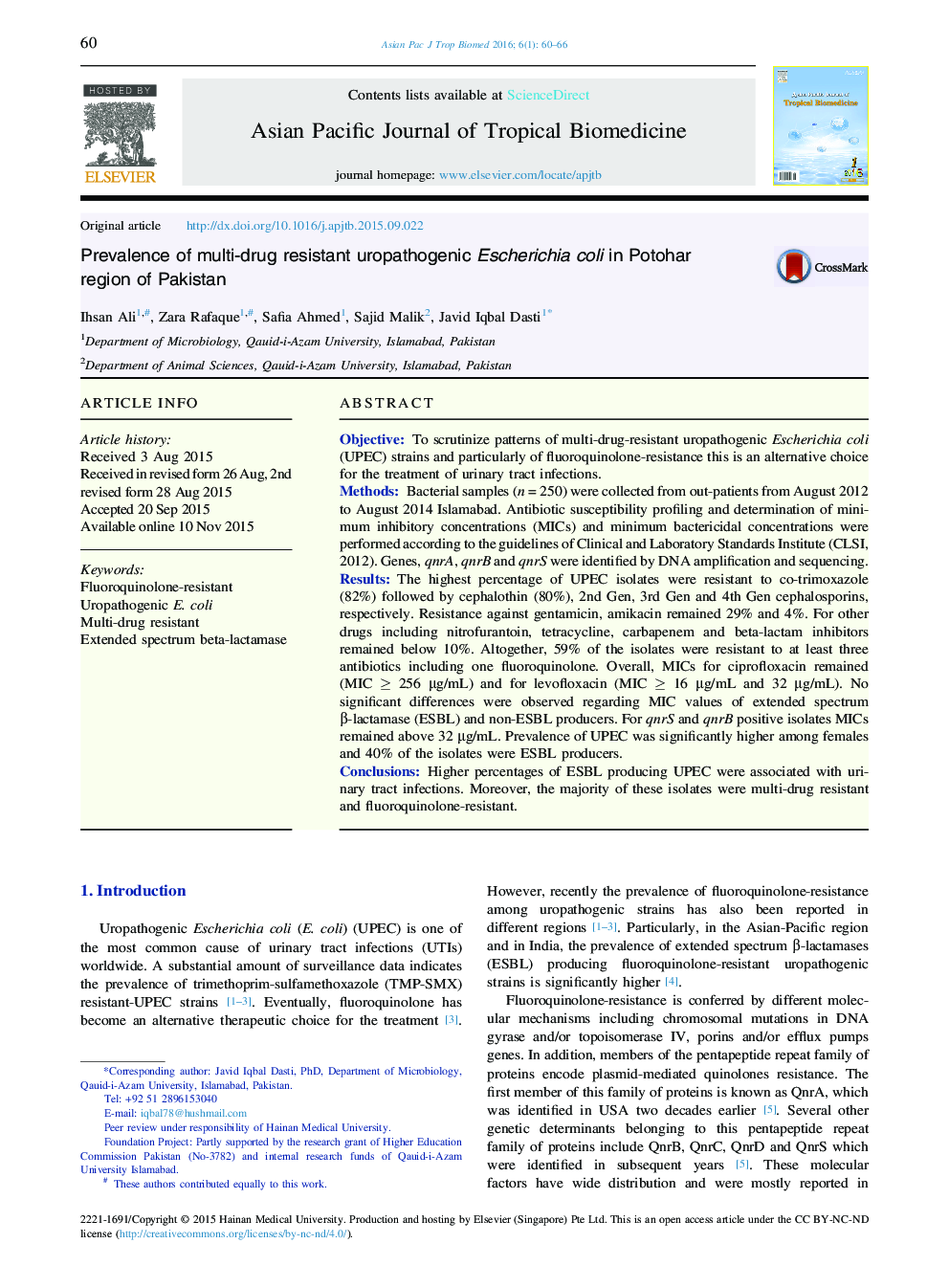| Article ID | Journal | Published Year | Pages | File Type |
|---|---|---|---|---|
| 2032639 | Asian Pacific Journal of Tropical Biomedicine | 2016 | 7 Pages |
ObjectiveTo scrutinize patterns of multi-drug-resistant uropathogenic Escherichia coli (UPEC) strains and particularly of fluoroquinolone-resistance this is an alternative choice for the treatment of urinary tract infections.MethodsBacterial samples (n = 250) were collected from out-patients from August 2012 to August 2014 Islamabad. Antibiotic susceptibility profiling and determination of minimum inhibitory concentrations (MICs) and minimum bactericidal concentrations were performed according to the guidelines of Clinical and Laboratory Standards Institute (CLSI, 2012). Genes, qnrA, qnrB and qnrS were identified by DNA amplification and sequencing.ResultsThe highest percentage of UPEC isolates were resistant to co-trimoxazole (82%) followed by cephalothin (80%), 2nd Gen, 3rd Gen and 4th Gen cephalosporins, respectively. Resistance against gentamicin, amikacin remained 29% and 4%. For other drugs including nitrofurantoin, tetracycline, carbapenem and beta-lactam inhibitors remained below 10%. Altogether, 59% of the isolates were resistant to at least three antibiotics including one fluoroquinolone. Overall, MICs for ciprofloxacin remained (MIC ≥ 256 μg/mL) and for levofloxacin (MIC ≥ 16 μg/mL and 32 μg/mL). No significant differences were observed regarding MIC values of extended spectrum β-lactamase (ESBL) and non-ESBL producers. For qnrS and qnrB positive isolates MICs remained above 32 μg/mL. Prevalence of UPEC was significantly higher among females and 40% of the isolates were ESBL producers.ConclusionsHigher percentages of ESBL producing UPEC were associated with urinary tract infections. Moreover, the majority of these isolates were multi-drug resistant and fluoroquinolone-resistant.
